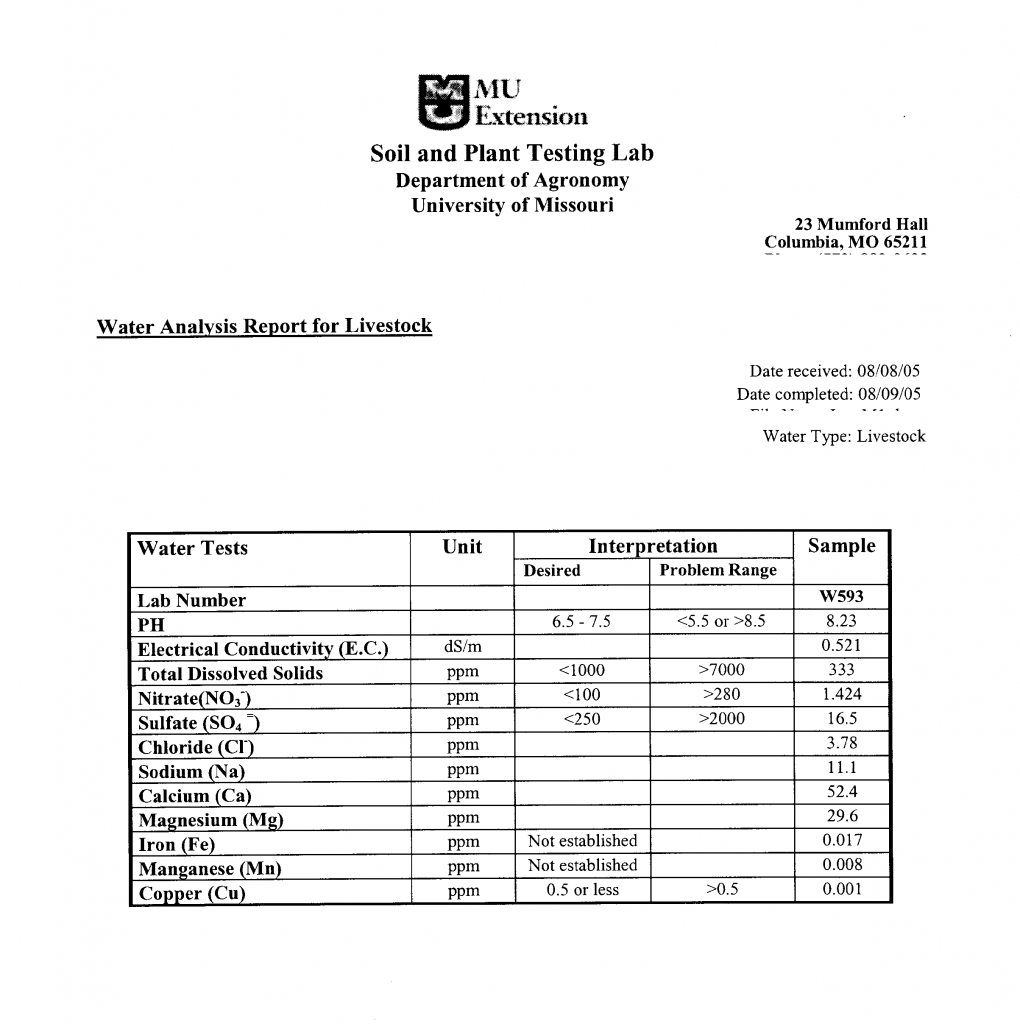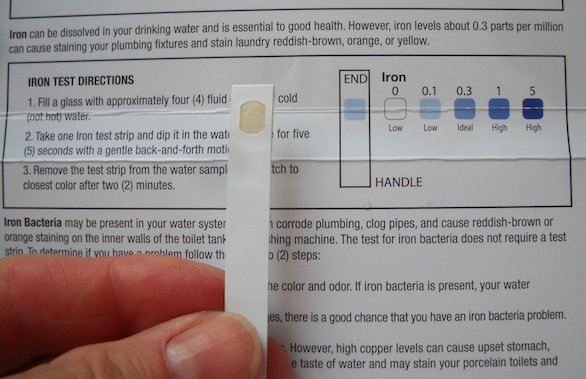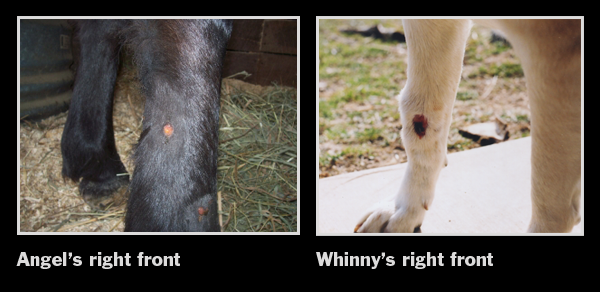Filtering water stops laminitis in horses; water tests indicated iron level was safe
Post reviewed Nov. 27, 2022
Nearly two decades of laminitis at this farm may have finally come to an end.
Filtering the well water with RV filters appears to have stopped the laminitis in the two surviving geldings.
The boys are staying pasture sound on 8 acres of spring grass in May 2016 following the removal of iron and other elements from their water starting Jan. 4, 2016. They have hay in their shed, but they mostly eat the grass around the clock.
I suspected the water was the cause of the laminitis after my 8-year-old dog, Whinny, died Aug. 6, 2005, of complete liver failure. The common denominator between the horses and dog was water. I didn’t put together until spring 2016 that some of the horses and the dog had similar abscesses on their legs from time to time, indicating their immune systems were being compromised. I had stumbled over a photo of Whinny’s leg and couldn’t believe I missed that similar symptom.
Two days after Whinny died, I did a water test through a university extension office, and the water showed an iron level of .017 parts per million.
Several water experts say the EPA’s maximum recommended level for iron is 0.3 ppm. Note that the Water Research Center says this standard is based on taste, odor, color, corrosivity, foaming and staining properties, not health considerations.
The extension office water test said the iron level was well below the EPA recommendation.

Water test August 2005.
After a well repairman suggested in May 2015 that our well had an iron problem (without me bringing up the topic), I did another water test in September 2015 using a cheap water testing kit from a home improvement store. It showed the water levels were perfect for several heavy metals, including iron.

Water test in September 2015.
I am not even hinting that these tests didn’t work properly. I am suggesting that using a water testing kit to rule out a water source as the cause of laminitis may not work. There seems to be a disconnect between what is being tested and what is affecting the horses.
The following video shows a month-old RV filter on our outdoor well spigot. The filter is designed to last three months. On our well, each filter gets clogged and starts spitting out trapped iron within days.
Without the filter, the water was always clear.
I’ve written in previous posts that I played with filtering the outdoor water in 2015, but there were periods when I removed a clogged filter and didn’t have a new one to replace it right away. And the indoor water wasn’t filtered; the horses drank a fair amount of water from buckets filled indoors.
Also in 2015, I added curcumin and ginkgo, supplements that chelate (remove) heavy metals, to the horses’ diets intermittently.
Starting Jan. 4, 2016, all water was filtered.
Within two weeks, the horses looked as if someone popped them with a pin. They shrank and looked like different horses.
And they were suddenly able to consume a lot more forage. On Jan. 14, 2016, we bought 100 bales of brome that the horses really liked. I gave the horses as much hay as they wanted. By Feb. 20, the bales were gone. These two Connemaras ate 100 bales of hay in five weeks and got no exercise other than walking around, and they lost weight. I have no other explanation than perhaps removing the iron improved their metabolism. Through years of laminitis, they gained weight just looking at hay.
Both horses lost their winter coats in March 2016 as a normal horse would do. The two previous winters, Kurt’s hair looked as if it would never come out; I figured he was developing Cushing’s disease.
